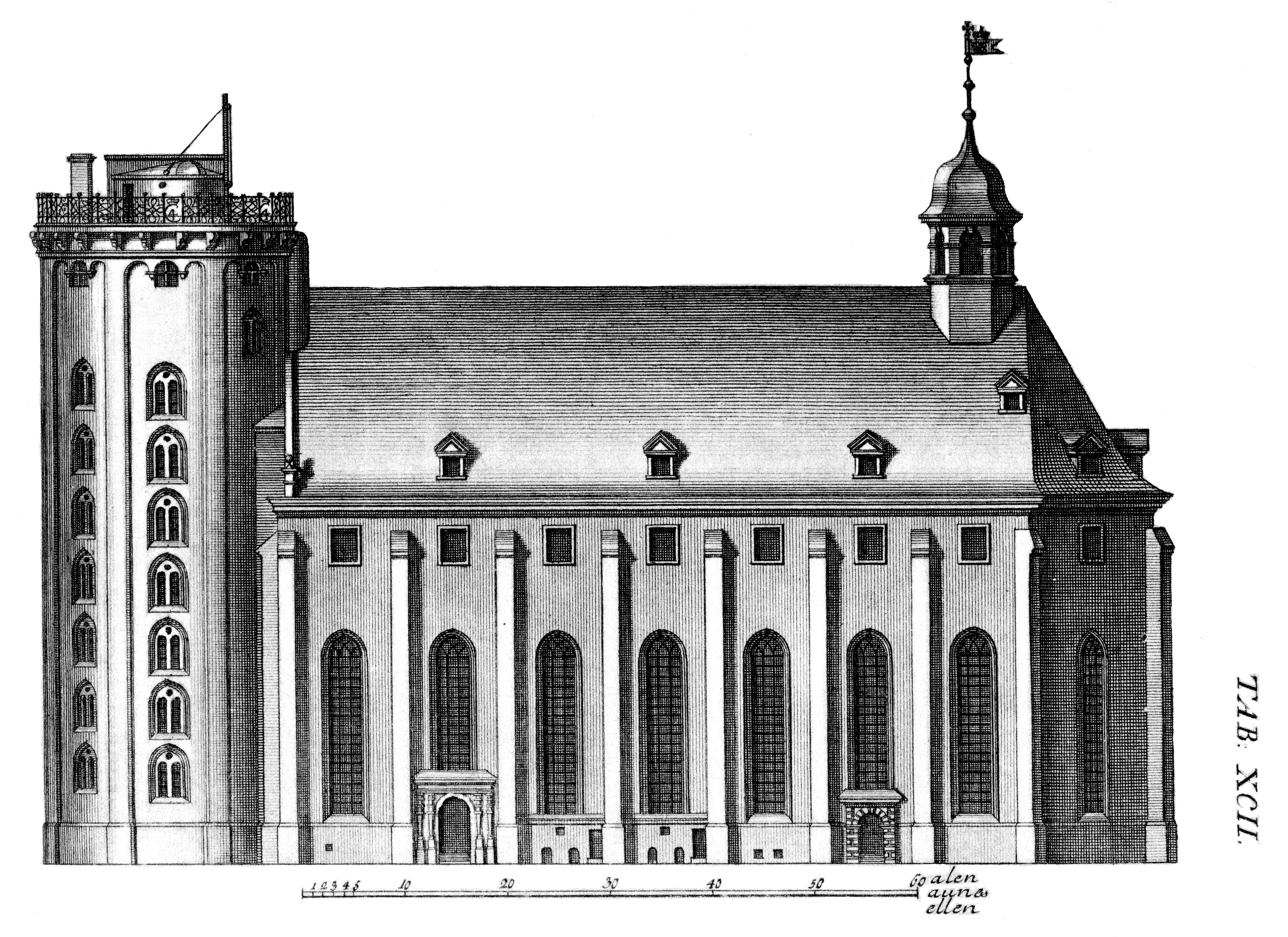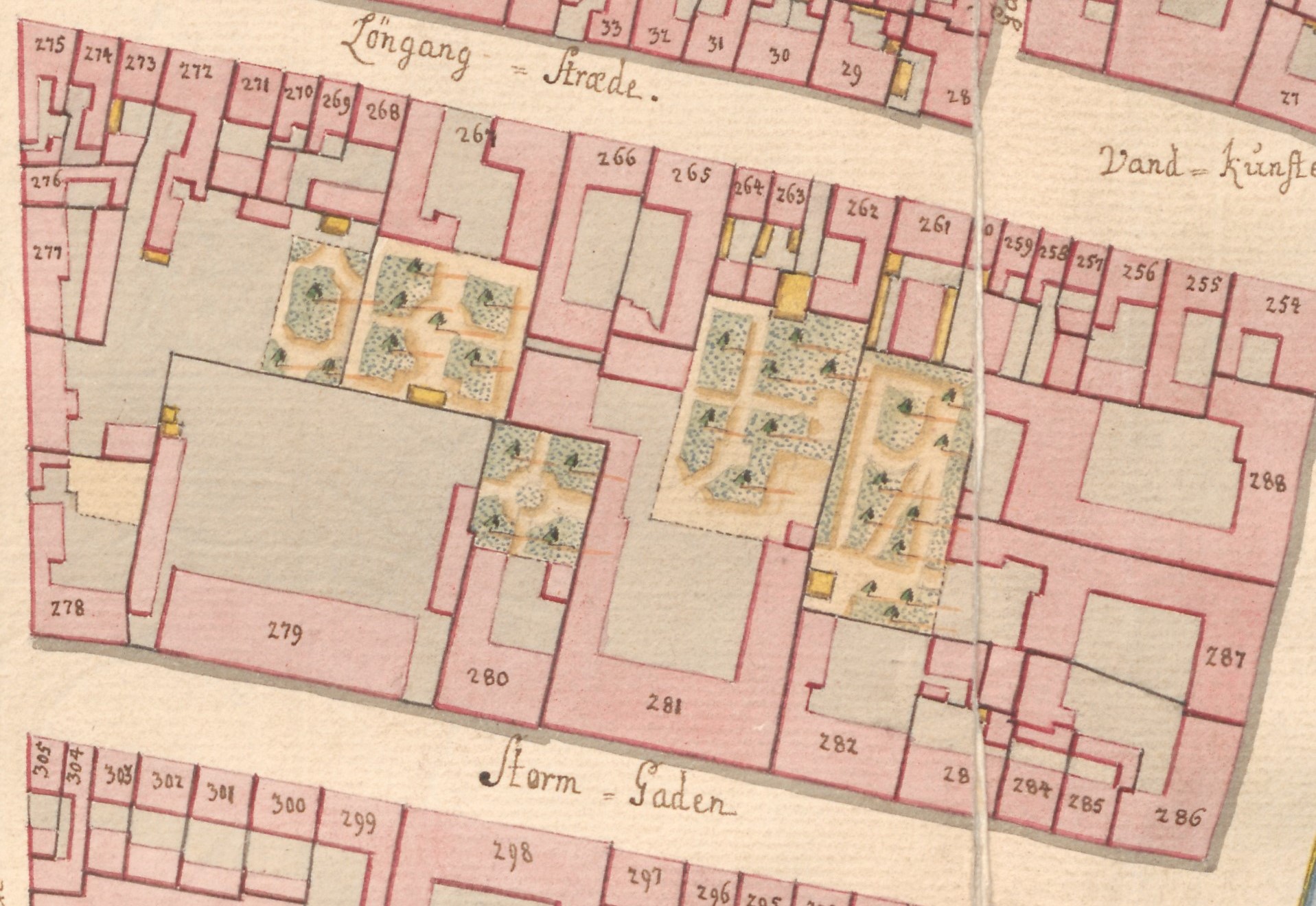|
Dronningens Tværgade 7
Dronningens Tværgade 7 is a Neoclassical architecture, Neoclassical property situated opposite Moltke's Mansion in central Copenhagen, Denmark. The building was from 1824 to 1867 home to the Royal Art Museum (Danish: Det Kongelige Kunstmuseum), a precursor of the National Museum of Denmark, National Museum. The wine dealer Otto Suenson & Co. was founded in the building on 24 May 1880 and still operates a wine shop in the basement. The building was listed in the Listed buildings in Copenhagen Municipality, Danish registry of protected buildings and places in 1999. History Construction The site was originally part of the extensive garden of the Hotel Phoenix Copenhagen, Gyldensten Mansion which reached all the way from Bredgade to Store Kongensgade along the south side of Dronningens Tværgade. The house was named after Jean Henri Huguetan, Count Gyldensteen. In 1793, part of the garden was divided into three long, narrow lots and sold off for redevelopment. Dronningens Tværgade ... [...More Info...] [...Related Items...] OR: [Wikipedia] [Google] [Baidu] |
Neoclassical Architecture
Neoclassical architecture, sometimes referred to as Classical Revival architecture, is an architectural style produced by the Neoclassicism, Neoclassical movement that began in the mid-18th century in Italy, France and Germany. It became one of the most prominent architectural styles in the Western world. The prevailing styles of architecture in most of Europe for the previous two centuries, Renaissance architecture and Baroque architecture, already represented partial revivals of the Classical architecture of Roman architecture, ancient Rome and ancient Greek architecture, but the Neoclassical movement aimed to strip away the excesses of Late Baroque and return to a purer, more complete, and more authentic classical style, adapted to modern purposes. The development of archaeology and published accurate records of surviving classical buildings was crucial in the emergence of Neoclassical architecture. In many countries, there was an initial wave essentially drawing on Roman archi ... [...More Info...] [...Related Items...] OR: [Wikipedia] [Google] [Baidu] |
Charles August Selby
Charles August Selby (24 October 1755 – 15 March 1823) was an English- Danish merchant and landowner. He built the Bækkeskov manor house at Præstø and Orupgaard on Falster. The Baron's oldest son, the politician and landowner, Charles Borre Selby, inherited the estate."Orupgaards historie" , Orupgaard Gods. Retrieved 22 November 2012."Orupgård" Lolland-Falsters Herregårde. Retrieved 22 November 2012. Early life Selby was born in London, the son of Thomas Selbye (1711-1787), the owner of , |
Trinitatis Church
The Trinitatis Church (''Trinitatis Kirke'') is located in central Copenhagen, Denmark. It is part of the 17th century Trinitatis Complex, which includes the Rundetårn astronomical observatory tower and the Copenhagen University Library, in addition to the church. Built in the time of Christian IV, the church initially served the students of Copenhagen University. It is situated at the corner of Landemærket and Købmagergade. The interior was seriously damaged in the fire of 1728 but was rebuilt in 1731. , Visit Copenhagen. Retrieved 16 December 2012. History Initial plans in 1635 were for a student church at Regensen, the[...More Info...] [...Related Items...] OR: [Wikipedia] [Google] [Baidu] |
Rundetårn
The Round Tower () is a 17th-century tower in Copenhagen, Denmark, one of the many architectural projects of Christian IV. Built as an astronomical observatory, it is noted for its equestrian staircase, a 7.5-turn helical corridor leading to the platform at the top (34.8 meters above ground), and its views over Copenhagen. The tower is part of the ''Trinitatis Complex'' which also includes a chapel, the Trinitatis Church, and an academic library, which were the first facilities of the Copenhagen University Library founded in 1482. History Background Astronomy had grown in importance in 17th-century Europe. Countries had begun competing with each other in establishing colonies, creating a need for accurate navigation across the oceans. Many national observatories were therefore established, the first in 1632 at Leiden in the Dutch Republic. Only five years later the Round Tower Observatory, first referred to as STELLÆBURGI REGII HAUNIENSIS, would follow. Planning and prep ... [...More Info...] [...Related Items...] OR: [Wikipedia] [Google] [Baidu] |
Holstein Mansion
The Holstein Mansion is a Baroque style town mansion on Stormgade in central Copenhagen, Denmark. The history of the property dates back to the late 17th century but the name and current design of the building is from the 1750s when it was owned by the Holstein family and expanded by royal sculptor Jacob Fortling. Once home to the Natural History Museum, it housed government offices until 2015. Today it has beecompletely renovatedand converted into private apartments. History Early history The original house was built for Hofmarschall Henrik Ulrik Lützow in 1687. The two-storey, nine-bay house was possibly designed by General Building Master Lambert van Haven. Lützow's property was listed in Copenhagen's first cadastre of 1689 as No. 261 in the city's West Quarter (Vester Kvarter). In 1706, the house was expanded with a wide bay at both ends of the main wing and two perpendicular wings to the rear. The architect of this expansion was possibly Johan Conrad Ernst. Holstein fa ... [...More Info...] [...Related Items...] OR: [Wikipedia] [Google] [Baidu] |
Christiansborg Palace (2nd)
The second Christiansborg Palace was a new main residence for the Danish Monarch built from 1803 to 1828 in Copenhagen as a replacement for the first Christiansborg Palace which had been destroyed by fire in 1794. The new palace was constructed on Slotsholmen, on the ruins of its predecessor, and designed by royal master builder Christian Frederik Hansen. By the time the palace was completed, King Frederick VI had found himself comfortable at his temporary residence at Amalienborg Palace and decided he did not want to live in the new palace after all. He only used the royal premises for entertainment. The palace also housed the Parliament and administrative services. Frederik VII was the only monarch to live in the palace. This was between 1852 and 1863. History Construction of the new Christiansborg After the fire in 1794, the royal family initially took up temporary residency at Rosenborg Castle and later moved to Amalienborg Palace. Christian Frederik Hansen, until then ma ... [...More Info...] [...Related Items...] OR: [Wikipedia] [Google] [Baidu] |
Slotsholmen
Slotsholmen (English language, English: The Castle Islet) is an island in the harbour of Copenhagen, Denmark, and part of Copenhagen Indre By, Inner City. The name is taken from the successive castles and palaces located on the island since Absalon, Bishop Absalon constructed the city's first castle on the island in 1167 at the site where Christiansborg Palace lies today. Recognised as the centre of the Government of Denmark since the Middle Ages, the island is sometimes referred to as 'the Island of Power' (''Magtens Ø''), and is lined with central government institutions and ministries; the name ''Slotsholmen'' is thus also frequently used as a metonym for overall Danish governmental administration. The island is dominated by the vast Christiansborg Palace which houses the Folketing, Danish Parliament, the Supreme Court of Denmark, the Prime Minister's Office (Denmark), Prime Minister's Office and the State Rooms of the Monarchy of Denmark, King. Also located on the island are ... [...More Info...] [...Related Items...] OR: [Wikipedia] [Google] [Baidu] |
Royal Danish Library
Royal Danish Library () is a merger of the two previous national libraries in Denmark: the State and University Library in Aarhus and the Royal Library in Copenhagen Copenhagen ( ) is the capital and most populous city of Denmark, with a population of 1.4 million in the Urban area of Copenhagen, urban area. The city is situated on the islands of Zealand and Amager, separated from Malmö, Sweden, by the .... Although now under a single organisation, the separate locations in both cities are maintained. The merger came into effect on January 1, 2017. References National libraries Libraries in Denmark {{Library-struct-stub ... [...More Info...] [...Related Items...] OR: [Wikipedia] [Google] [Baidu] |
Cabinet Of Curiosities
Cabinets of curiosities ( and ), also known as wonder-rooms ( ), were encyclopedic collections of objects whose categorical boundaries were, in Renaissance Europe, yet to be defined. Although more rudimentary collections had preceded them, the classic cabinets of curiosities emerged in the sixteenth century. The term ''Cabinet (architecture), cabinet'' originally described a room rather than a Cabinet (furniture), piece of furniture. Modern terminology would categorize the objects included as belonging to natural history (sometimes faked), geology, ethnography, archaeology, religious or historical relics, works of art (including cabinet paintings), and antiquities. In addition to the most famous and best documented cabinets of rulers and aristocrats, members of the merchant class and early practitioners of science in Europe formed collections that were precursors to museums. Cabinets of curiosities served not only as collections to reflect the particular interests of their c ... [...More Info...] [...Related Items...] OR: [Wikipedia] [Google] [Baidu] |
Danish Rigsdaler
The rigsdaler was the name of several currencies used in Denmark until 1875. The similarly named Reichsthaler, riksdaler and rijksdaalder were used in Germany and Austria-Hungary, Sweden and the Netherlands, respectively. These currencies were often anglicized as rix-dollar or rixdollar. History Several different currency systems have been used by Denmark from the 16th to 19th centuries. The ''krone'' (lit. "crown") first emerged in 1513 as a unit of account worth 8 marks. The more generally used currency system until 1813, however, was the Danish ''rigsdaler'' worth 1 ''krone'' (or ''schlecht daler''), 6 marks, or 96 '' skilling''. The Danish ''rigsdaler'' used in the 18th century was a common system shared with the silver reichsthalers of Norway, Hamburg and Schleswig-Holstein. The currency system consisted of the Reichsthaler specie (''Rigsdaler specie'') worth 120 ''skillings'' in Denmark and Norway, and the lower-valued ''Rigsdaler courant'' worth th of specie or 96 ''ski ... [...More Info...] [...Related Items...] OR: [Wikipedia] [Google] [Baidu] |
Rentekammeret
The Rentekammeret (English: The Treasury) was the Danish central administrative body responsible for overseeing the public finances from the middle of the 15th century until 1849. The chief officials of Rentekammeret held the title of ''Rentemester'' (Treasurer). History The ''Rentekammer'', is first mentioned in the 1550sm although a ''rentemester'' is mentioned as early as 1517. At the introduction of the absolute monarchy in 1660 it became a ''kollegium'' under the name ''Skatkammerkollegiet'', but in 1679 it was given its old name back. In 1770 it was merged with the General Customs Chamber (''Generaltoldkammeret'') and in 1771 became part of the Finanskollegiet, but was revived in 1773 as an independent body under its old name. Originally, the Rentekammeret was solely in charge of the state's payments and disbursements as well as accounting audits, but eventually also became responsible for the overall financial and tax policy as well as for agricultural matters, forestry, road ... [...More Info...] [...Related Items...] OR: [Wikipedia] [Google] [Baidu] |








